Lots to Contemplate When Not Focused Only on Iconic Landscapes
When the log footbridge across Colonial Creek came into view, I breathed a sigh. It initially was of relief, until I noted that the creek was roiling and swollen enough to slap furiously against the bottom of the crossing. That bridge sometimes is gone by October, and I’d neglected to check with a National Park Service ranger about it. I had two in my group, but neither worked at North Cascades National Park.
Listen to Baker Island
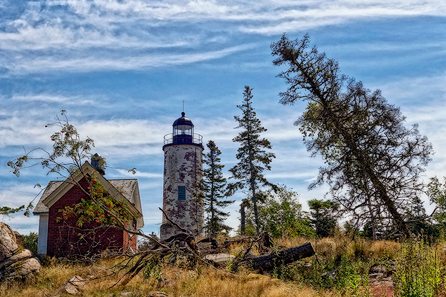 Part of Acadia National Park in the Cranberry Isles.
Part of Acadia National Park in the Cranberry Isles.
Let’s just say I dodged one issue, only to court another.
It was raining sheets and I was leading a diverse group of about a dozen leaders from green groups and federal agencies on a hike in one of Washington state’s three national parks. The weather hadn’t caught us off guard. This was one of those big-payoffs-for-little-effort type of treks and we’d decided to make like Nike and just do it. Except for the fact that some in the party hadn’t been completely prepared for Pacific Northwest weather, the hike went off without a hitch. Until we returned to the beginning.
“Oh dang,” I thought, or something like that, when I saw the overflowing creek nearly had swallowed the bridge and the crossing had been washed out. Even before this, I’d have said that Kenji Haroutunian, the former director of the Outdoor Retailer Show, was the hardiest of the group. He’s a longtime climber and adventure sportsman. And, as such, he leapt into action – literally – splish-splashing his way toward some boards to form a makeshift crossing.
Already soaked, I figured a little more water couldn’t hurt, so I trudged into the creek to help. The chill immediately swamped my boots and lodged a place into my core that remained until, safe at base camp later, Haroutunian handed me a flask and said, “This ought to take care of it.” It certainly did. Nearly as heroic as Haroutunian were Charles Beall, who once was the acting superintendent at North Cascades, and Amanda Dworak Rowland, the youth programs coordinator for the West Region of the Park Service. As the rangers in our group, they felt obligated to stay behind and help a Canadian couple we saw making their way up as we were coming down.
After ferrying some of our colleagues back and swiftly changing into dry clothes, I fetched Beall and Rowland. I hadn’t yet felt the benefit of the belt from Haroutunian’s flask. During the shivering drive, I thought back on a year in national parks, 17 in all, as I traveled to report stories on race and diversity in the outdoors, including Nancy Fernandez’s quest for employment in the overwhelmingly white agency. Several of other stories were connected to the agency’s centennial and, though not always this dramatic, the year had yielded many takeaways about the heralded but struggling federal system of protected public lands.
This was one of the last of the takeaways, and it took me back to my youth – and a hack on those old Chiffon margarine television commercials:
“It’s not nice to fool (with) Mother Nature.”
And yet, way before the assaults on public lands began and the alt-reality of the agency unfolded, I saw a lot of fooling with the Park Service during a year when I took a deep dive into it. I did not rush through all national parks like several people did to commemorate its milestone. I spent quality time in a number that would exceed a lifetime total for most. It’s funny what you see when your focus is not always fixed on iconic landmarks.
Gateway Cities
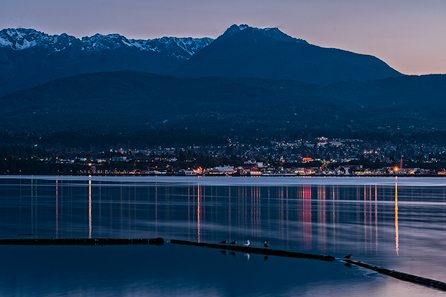 Gateway cities are an essential part of any national parks visit. Here are five of my favorites.
Gateway cities are an essential part of any national parks visit. Here are five of my favorites.
Click Here for Story
I hiked by people wearing flip-flops en route to aptly named Glacier Point in Mount Rainier National Park and on a snowbound trail to aptly named Snow Lake in Rocky Mountain National Park. Mere months after a young man from Oregon literally melted in a boiling hot spring at Yellowstone National Park, I watched a couple not only leave a snowy boardwalk at Grand Prismatic Spring, but also stalk a bison bull many yards for a selfie. I might have been among a group of people who were too close to a grizzly bear at Grand Teton National Park, but at least I was using my rented SUV for cover and protection. That’s more than I can say for the guy who ran at a moose cow and her calf with a point-and-shoot at Rocky Mountain, or the Chinese tourists who took self portraits among a herd of bison, and the crowd that ran up a blind hill after a grizzly at Yellowstone.
And then there was the couple that tried rolling a baby carriage over the rocky, undulating trail to Tomales Point at Point Reyes National Seashore. It’s a 9 1/2-mile trek through an elk refuge, and the kids were crying. What are people thinking? Much of the time, they seem not to be.
The National Park Service, at least, knows not to fool with Her Worship, though it has one heckuva time managing her when they need to.
Snow was in the forecast for Washington, D.C., but it was March and I had a hard time believing it (I’m from Seattle, after all, where it rarely snows, even during the winter). I was headed to Shenandoah National Park and decided to play it safe by renting a hulking big Jeep with four-wheel drive. After a morning hike, I was browsing in the bookstore at the Harry S. Byrd Sr. Visitors Center, when the door burst open and a ranger ran in, yelling, “Everyone out of the park!” It was snowing and national parks can’t exactly use chemicals to clear their roads, so Shenandoah closed and stayed closed through the end of my stay.
Such matters can get worse, of course, because of climate change. I’ve become accustomed to seeing the receding glaciers at Mount Rainier and North Cascade National Parks, which are close to me in Seattle. But I was absolutely heart-broken during the ride into and through Kings Canyon and Sequoia National Parks. There, the green on the hills and mountainsides are marred by the telltale gray of dead trees (nicknamed “gray ghosts” because they remain standing), by the thousands, victims of California’s extreme drought or invasive bark beetles. Not long after I left, the U.S. Forest Service concluded that 102 million trees have died in California forests since 2010, half of that total during 2016 alone.
There also weren’t many glaciers to be seen in the Many Glacier area of Glacier National Park. Sometimes I see the famous wildflowers of Mount Rainier National Park at the end of June, instead of beginning of August, when people travel from around the world to see them. Likewise, the famous, roaring waterfalls of Yosemite sometimes slow to drought-induced drips before the height of tourist season.
In many ways, the National Park Service either is on the front lines of fighting climate change, or is acting as our last line of defense against it. I found the outlook to be a mixed bag.
The pika, the cute and furry face of climate change, is in trouble at Rocky Mountain National Park, where it is an icon. However, biologists at Grand Teton, Mount Rainier and North Cascades told me that the pika is flourishing and has hope in those places. Recent studies show that connectivity of habitat is more important than more altitude for the temperature-sensitive, rock-dwelling kin to the rabbit.
Listen to a Bugling Elk
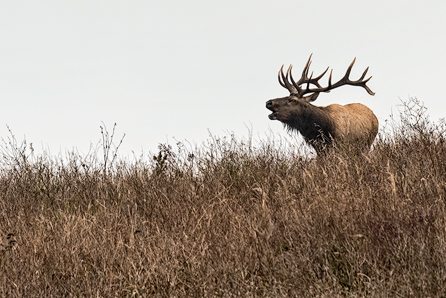 From near Tomales Point in Point Reyes National Seashore.
From near Tomales Point in Point Reyes National Seashore.
My heart went out all year to wildlife, which are defenseless against the havoc man wreaks upon their ecosystems. In large part, they are blissfully unaware. Like the marmots rolled out like sleeping bags on rocks where they sunned themselves along the Paradise River in Mount Rainier National Park. Or the young moose my wife and I watched play in Taggart Lake for nearly an hour in Grand Teton National Park. It suddenly stopped splashing around and ran into the woods, as if summoned by its mother for dinner. I also was transfixed by elk jumping and dipping its antlers in one of the Sheep Lakes in Rocky Mountain National Park, a place in other times you might find bighorn sheep, which are attracted to salt deposits in the soil.
Elk made me sit and watch in a lot of places – as they crossed roads in Grand Teton, Olympic, Point Reyes and Yellowstone. I did a lot of waiting, in fact, for bison in Yellowstone, pronghorn in Grand Teton, white-tailed deer in Shenandoah, wild turkeys in Rocky Mountain, and a black bear in Sequoia – just to get to the other side. Not all make it: While in Yosemite, I learned 27 black bears had been hit by cars in that park by the time I visited a second time in September.
From bugling elk, wailing loon, and howling coyotes, the calls of the wild were like a soundtrack to my time in the parks. The varied thrush I heard in just about every forest I visited transported me back to my days as a sportswriter because they sound like referees’ whistles. I’ll not soon forget the loud dawn serenade by elk, coyotes and owls at Grand Teton, or listening to the desert come alive during the wee hours at Saguaro National Park. Or the silent terror of a rare mountain lion sighting reported where then-superintendent Scott Tucker and I had a discussion about a half hour earlier at Lewis and Clark National Historical Park in Oregon.
Things could be just as unpredictable on the human side of things. As part of a herd of journalists, we virtually walked into a Park Service harassment scandal, meeting with Yosemite’s Kelly Martin, fresh off her testimony before Congress about the park’s hostile work environment. A couple days later, Yosemite’s superintendent, Don Neubacher, was gone. Mostly, during a year when they smashed their visitation record by nearly 17.5 million, the national parks were stuffed with people. Days before the July 4th weekend, I rode around Mount Rainier with a park leader who almost was wincing in anticipation of the summer holiday deluge. When my daughter and I were en route to Baker Island at the start of Labor Day Weekend in Acadia National Park, we ferried past granite cliffs dotted with people like flies on ripe fruit.
Speaking of ripe fruit, in many places it could have been piled up outside smelly pit toilets or potholes on park roads and left to rot because of the Park Service’s more than $12-billion maintenance backlog.
But beyond the dark clouds, there were rainbows to be found.
National Parks Photo Galleries
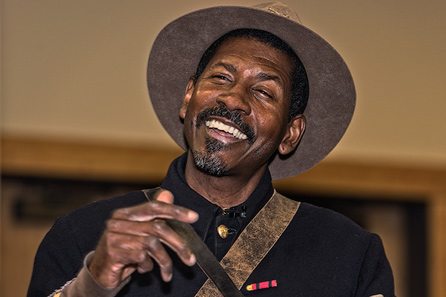
Check out images from a year of reporting in national parks:
Click Here for National Parks Wildlife Gallery
Click Here for National Parks Landscapes Gallery
Click Here for National Parks People Gallery
There also were dark skies, such as those I beheld in Acadia, Glacier and Olympic – places less impacted by light pollution in the rampantly urban U.S.
I spent much of the year searching for diversity in our otherwise overwhelmingly white national parks and discovered pockets of it. I saw more people of color on the trails at Santa Monica Mountains National Recreation Area than I had during the sum of the rest of my life. At Santa Monica, I met Antonio Solorio, a Mexican-born ranger who administrates a groundbreaking youth program connecting high-school youth of color to public lands. His colleague, Michael Liang, is gay, Chinese American and a “Centennial Ambassador” who has impacted National Park Service messaging from coast to coast. I also got to see that park’s La Ranger Troca, a colorfully converted bread truck that takes the Santa Monica Mountains to places like East Los Angeles, where the largest green spaces otherwise are cemeteries.
In Tucson, a large Latino community abuts Saguaro National Park, but seldom visits it. I wandered the Sonoran Desert with two leaders determined to change that – José González, who founded Latino Outdoors, and Cam Juárez, who left the private sector to do public outreach at Saguaro. And between the agave and the petroglyphs, we spied the already darkening complexion of visitation.
On top of everything, I spent several inspiring days with Shelton Johnson. He likely is our country’s most well-know park ranger because of his breakout role in the Ken Burns documentary, The National Parks: America’s Best Idea, as well his successful invitation for Oprah Winfrey to visit Yosemite National Park, where he works. Yosemite is such a critical touchstone for many of the cultures the Park Service is trying to attract. Foremost is the Buffalo Soldiers, the all-black Army regiments who served as precursors to park rangers. Johnson, who calls himself “the spokesperson for the dead,” has made it his life’s work to keep alive the story of the Buffalo Soliders as a cultural and spiritual connection between national parks and African Americans and other people of color.
I followed Johnson to the World Ranger Congress, held in Estes Park, Colorado, on the boundary of Rocky Mountain National Park. There, he delivered a spellbinding opening keynote and performed his one-man play about a Buffalo Soldier, Elizy Bowman. The congress was a testament to the pride and dedication that park rangers bring to their jobs every day, but which I found constantly overlooked by visitors.
In Estes Park, I spoke to several of the park rangers from Africa who swarmed Johnson out of pride for their black American brother. I was moved by their almost nonchalant courage. Part of the opening ceremonies was the reading of names of rangers who died in the line of duty during the previous year; most of those were from Africa, where rangers are in constant battle against heavily armed poachers of endangered wildlife.
“It is like we are fighting terrorists,” said Simon Ngugi Gitau of Kenya.
Much of the hope I felt in national parks was generated by non-profit affinity organizations — the so-called “Friends Groups.” I joined about 10 of them (and counting) because they are unencumbered by the often-onerous federal regulations and procedures that choke the agility and ingenuity of the parks they are set up to support. So groups like the Yosemite Conservancy, Yellowstone Forever or Washington’s National Parks Fund can focus funds on maintenance or science projects and directly recruit and hire diverse candidates to put to work in national parks. I joined Friends of Acadia, which, although located in the whitest state in America, funds programs for diverse youth that serve as models for parks throughout the system. Besides, they also fund a robust shuttle system, rivaled in my travels at least only by the ones at Rocky Mountain and Yosemite.
Listen to Drakes Beach
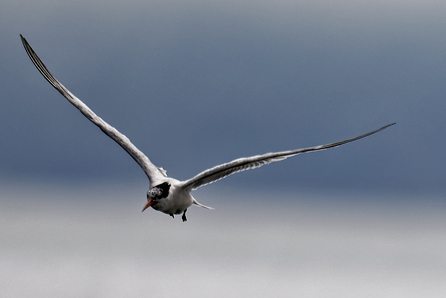 Waves and terns at Point Reyes National Seashore.
Waves and terns at Point Reyes National Seashore.
Supplemental transportation, by the way, will have a firm place in the future of the National Park Service, if it is to sustain itself by attracting people of color, other marginalized and low-income groups, and increasingly car-free millennials.
Transportation is on my mind because it played a role in my last significant national parks memory from the centennial. Late in the fall, my wife Florangela and I flew into Jackson Hole, Wyoming, probably the most striking airport I’ve ever visited. After an approach past the eye-popping Tetons, you disembark into an airport that looks a lot like the Craig Thomas Discovery and Visitor Center in Moose, which I also think is the nicest visitor center to which I’ve been. Snow was in the forecast, so I reserved an SUV. The person in front of me at the rental counter got the last one; I was offered an upgrade to a premium-class SUV. I accepted and took possession of a Ford Expedition, the largest vehicle I’d driven since ferrying my girls AAU basketball team around in vans years ago.
Though we easily rumbled over unpaved back roads on the lookout for moose and bear in Grand Teton, I truly was on guard against developing a false sense of security. We headed into Yellowstone with snow in the forecast and apprehension in my stomach. We made a white-knuckle drive in the dark from Madison to Lamar Valley, only to see the folly in our fear while backtracking the route during daylight. The next day, somewhere between Grand Prismatic Spring and Old Faithful, the white stuff came down in earnest. The map at the information desk in the Old Faithful Visitor Center confirmed our worst fears – all the roads in Yellowstone were closed.
The good news: Crews were focusing on clearing the road to the South Entrance and the route to Jackson, where we were staying that night and flying out of the next day. Florangela and I strolled around the grounds, reaching Castle Geyser before visibility sank to nearly zero. Old Faithful was scheduled to blow in 15 minutes, but we went back to the information desk to check on road conditions. The ranger there leaned over and in a low voice said, “While I’d love for you to stay and enjoy the sights, I need to encourage you to leave.” When we didn’t bolt quickly enough, he added, firmly, “Now.”
The farther down the road we went, the more isolated we became and the whiter everything became. I wondered aloud if we were making a foolish mistake; we weren’t even experienced enough with snow to make a guess. Florangela said, “It’s an adventure.” But I kept thinking how all the roads in Yellowstone followed rivers and, if I couldn’t distinguish the next curve, we’d run off the road into icy water, where we wouldn’t die from our wounds but of hypothermia. When a snowplow rumbled by, heading back to Old Faithful, I decided to stop and follow. The driver didn’t inspire confidence. He looked harried and the plow occasionally shimmied and stopped, and the snow covered his path just as quickly as he cleared it.
Suddenly, it seemed, the snow just stopped falling and the sun peeked out. An old sedan – what I think of as a “beater” – chugged by, heading toward the South Entrance. Then another. And another. I turned around, figuring if they could do it, this big tank certainly could, too. The trouble with driving in the snow, on national park roads where the speed limit is 25 mph in good times, is that time drags interminably. But it passed and we didn’t. Back in Grand Teton, we made a stop by the side of the road, mostly to count our blessings. When we looked out at the meadow before us, we spied a coyote, making levitating lunges into the snow, hoping to snare a meal. It was a glorious sight.
We’d done it. We’d fooled with Mother Nature. And this time she didn’t take umbrage.
https://vimeo.com/196662532


